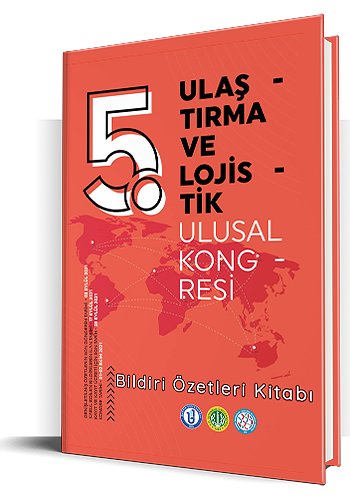
Ulaştırma ve Lojistik Kongreleri
- Türkçe
- Özet
- 2021
Deniz ve Kıyı Sularında Yük Taşımacılığı Sektörünün Entropi-COPRAS Yöntemiyle Finansal Trend Analizi
İsmail Fatih Ceylan
Dr. Öğr. Üyesi, Bartın Üniversitesi, Bartın, Türkiye
Ferhat Demirci
Arş. Gör., Bartın Üniversitesi, Bartın, Türkiye
Anahtar Kelimeler: Çok Kriterli Karar Verme, Deniz ve Kıyı Taşımacılığı, Finansal Analiz
Financial Trend Analysis of the Sea and Coastal Freight Water Transport Sector by Entropy-COPRAS Method
The geographical structure of Turkey, surrounded by seas on three sides, makes the sea and coastal freight transportation sector crucial. In addition to geographical features, the fact that maritime transport can be used for a wide range of products and its relatively low cost compared to other types of transport increases the importance of the sector. The business volume realized in the freight transportation sector is not independent from the business volume realized in other sectors due to the characteristic of the sector. The logistics sector is one of the sectors that directly affected by the growth and recession movements in local and global economies. According to the data of the Ministry of Transport and Infrastructure of the Republic of Turkey, the amount of cargo handled from ports in Turkey has been increasing regularly over the years. The main motivation of the research is to determine how similar the growth in the business volume of the sector is to the financial situation of the sector. In this research using the sectoral balance sheets published by The Central Bank of the Republic of Turkey for the Sea and Coastal Freight Water Transport Sector carried out financial trend analysis and compared with business volume of the sector. The period of the research covers the ten-year period between 2010-2019. Decision matrix was created by obtaining financial ratios pertaining to the sector for the period 2010-2019 from the Central Bank of the Republic of Turkey sector balance sheets. The decision matrix has been consisted of alternatives and criteria’s respectively years (2010-2019) and financial ratios. Financial ratios used in the research are current ratio, leverage ratio, receivables turnover, working capital turnover, equity turnover, asset turnover, net profit margin, return on assets and return on equity. These ratios generally measure the short-term debt repayment capability of the sector, the level of borrowing-profitability and the productivity level of the firm's activities. To determine the financial trend in the sector, multi-criteria decision-making methods, which are a type of operations research and have been widely used in the business literature in recent years, have been used. The COPRAS (Complex Proportional Assessment) method was chosen as a multi-criteria decision-making method and the period was sorted. The step of determining the criterion weights, which is accepted as an important step in multi-criteria decision-making methods, was carried out with the Entropy method. According to the findings of the Entropy-COPRAS method, the criteria are very close to each other in the period (2010-2019). The closeness of the weight values to each other caused the financial ratios to have an almost equal effect on the decision problem. According to the final ranking findings obtained by the COBRAS method, the most successful year is 2010 and the most failed year is 2011 in the period. When the financial ratios of 2011 are analyzed, it is observed that the current ratio and profitability ratios decreased significantly, while the leverage ratio increased significantly. However, the following year, this decline was reversed and 2012 became the second most successful alternative of the period. The profitability rates of the sector increased significantly in 2012 and approached the levels in 2010, and the current ratio, which expresses the ability to pay its short-term debts, showed a significant increase. The course of financial performance after 2012 is quite volatile. The financial performance of the sector showed a downward trend until 2014, and after a one-year improvement in 2015, it started to decline again in 2016. The years 2017 and 2018 were the fourth and third most successful years, respectively. The healing process observed in 2017 and 2018 have been reversed in 2019 and the 2019 year have been the most failed fourth alternatives of the study. As a general result of the research, it can be deduced that the financial trend of the sector shows a volatile trend for the years 2010-2019. The finding regarding the general result mentioned above reveals that there is an inconsistency between the business volume and financial performance in the sector.
Keywords: Multi Criteria Decision Making, Sea and Coastal Freight Water Transport, Financial Analysis


Bu çalışma, kullanan kişilere orjinal çalışmadan alıntı yaptıkları sürece, çalışmayı dağıtma, değiştirme ve üzerine çalışma hakkı tanıyan Attribution 4.0 International (CC BY 4.0) lisansı ile lisanslanmıştır.
İletişim
İstanbul Üniversitesi Ulaştırma ve Lojistik Fakültesi
İ.Ü. Avcılar Kampüsü 34320 Avcılar/İstanbul
ulk@istanbul.edu.tr
+ 90 (212) 440 00 00 - 19200


